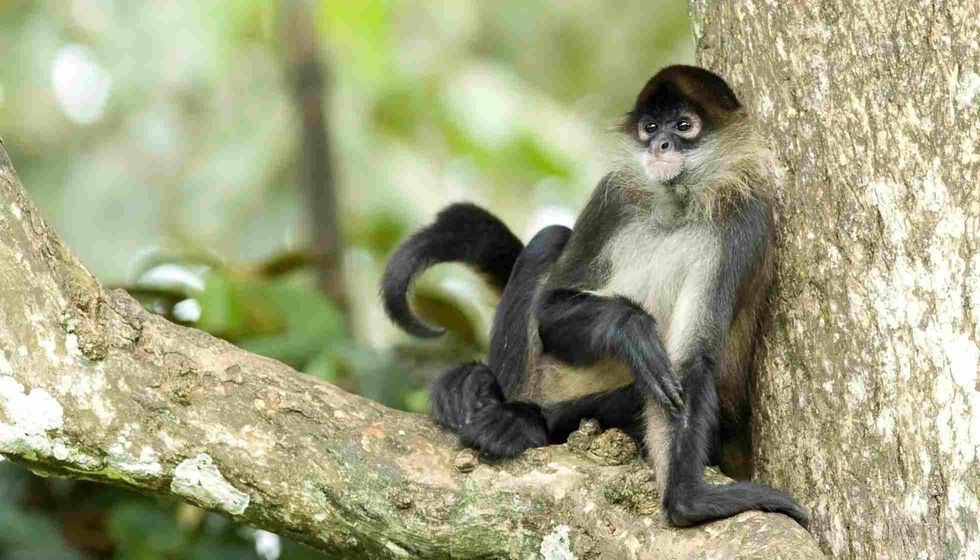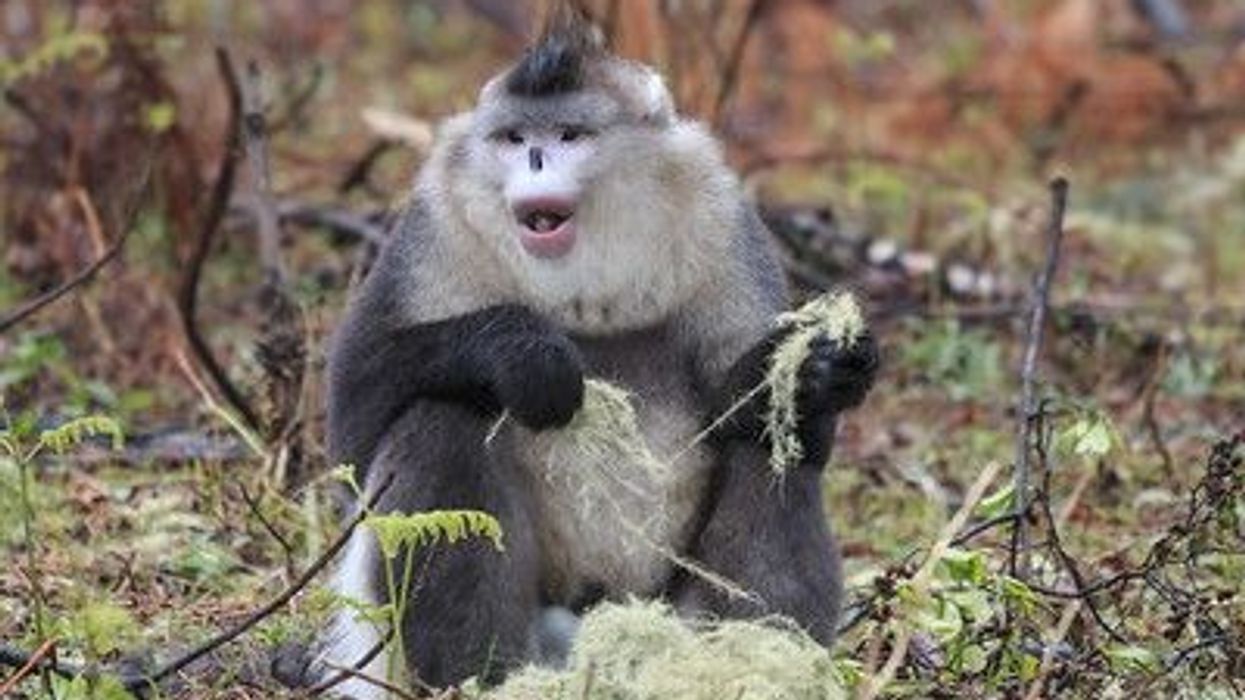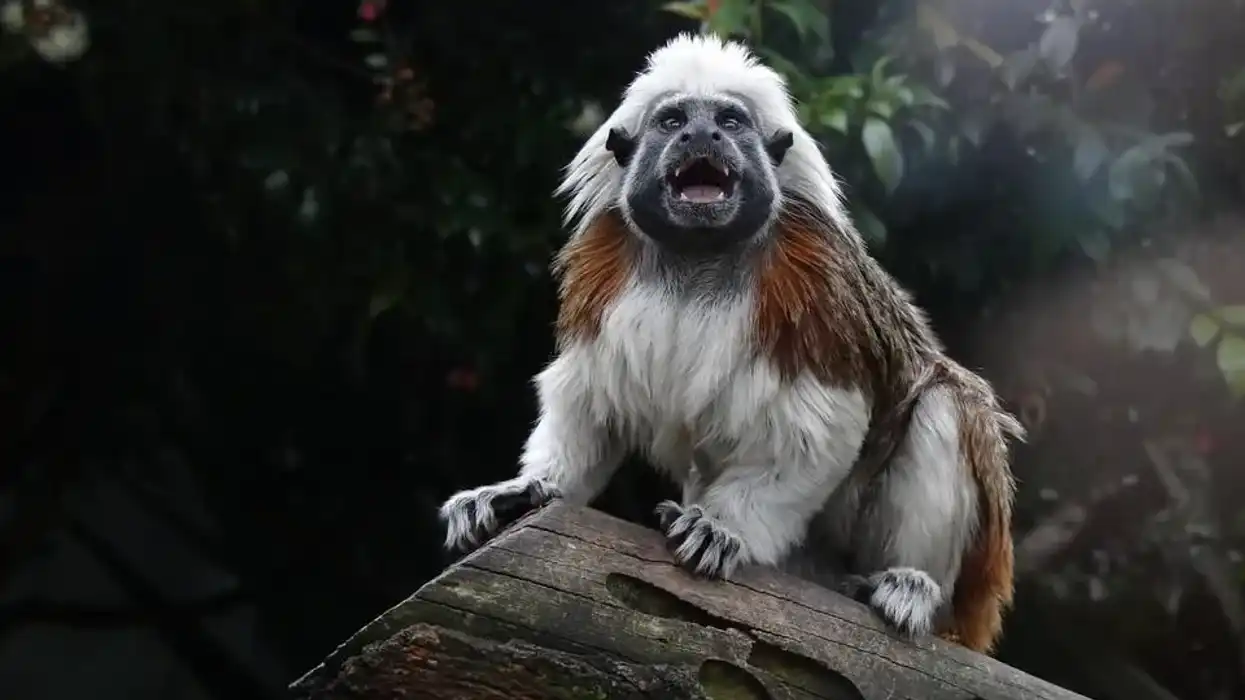Habitat loss is a global problem and species like the brown spider monkeys are victims of such a crisis.
Constrained in the lowland forests of South America precisely Colombia, and Venezuela this species is on the verge of extinction.
Recognized for its triangular white forehead patch this species has two more subspecies, the Ateles hybridus brunneus, and the Ateles hybridus hybridus. These diurnal animals are extremely social and prefer living in groups and play a crucial role in the subtropical rainforest of Venezuela and Colombia.
A single brown spider monkey distributes 195,000 seeds per year either carrying them from one location to the other or through digestive system expulsion, the method of dispersing seeds is popularly known as exozoochory and endozoochory which has a huge impact in maintaining the ecological balance of the forest and restore their habitat.
The brown spider monkey was treated as the subspecies of Ateles Belzebuth or the Ateles geoffroyi but later it was recognized as a different species.
If you want to learn more incredible facts about the brown spider monkey (Ateles hybridus) then keep reading this article.
For more such extraordinary facts please go and check out capuchin monkey facts and Brumback's monkey facts.
Brown Spider Monkey Interesting Facts
What type of animal is a brown spider monkey?
One of the most critically endangered primates of the Atelidae family that inhabits the regions of Colombia and Venezuela is the brown spider monkey. They are recognized for their prehensile tail, which functions like a fifth limb, and blue eyes.
What class of animal does a brown spider monkey belong to?
The brown spider monkeys belong to the class of Mammalia, order Primates, suborder Haplorhini, and genus Ateles.
How many brown spider monkeys are there in the world?
The species of spider monkey of South America is an extremely endangered species on the verge of extinction. It is assumed that there are fewer than 3000 brown spider monkeys left in the wild. Other than in the wild, they can be found in various zoos across Europe.
Where does a brown spider monkey live?
The geographical distribution of the brown spider monkeys covers the regions of northwestern Venezuela and northern Colombia. They inhabit the Magdalena River banks, the southwest region of Guajira, and the extreme north of Serrania de Perija.
The two main subspecies of the brown spider monkey inhabit the forest of both countries, while the A. h hybridus brunneus only exists in Colombia, between the region of Magdalena River and Ríos Cauca.
What is a brown spider monkey's habitat?
The brown spider monkey's habitat can be described as the conventional lowland rainforest.
The brown spider monkeys dwell in high trees, and the continuous forest with high canopies is their favorable habitat. The Colombian primary forest, and also the forest of Venezuela, has tall trees and undisrupted canopies unlike the secondary forests, the tall trees also enable these primates from other wild animals and their predators.
The primary forest has abundant vegetation with many trees which bear the fruits that form the major part of their diet and makes foraging relatively easy, but with increasing deforestation, the population of this species has taken a toll.
Who does brown spider monkey live with?
The brown spider monkeys are extremely social creatures and they live in a group that enables them to protect themselves from potential predators as they form multiple males and females groups.
These groups consist of as many as 2-30 monkeys, and frequently they form smaller groups and forage but foraging solitary is also observed. The males are more social than the females as they are philopatric.
The size of the groups also depends on the obtainability of food, when the food is widely available the Monkeys form big groups but as the availability of food drops the size of groups gets small.
How long does a brown spider monkey live?
The lifespan of brown spider monkeys depends on whether they are in captivity or in the wild. The average life span of this monkey in the wild is around 27 years while in captivity it lives until the age of 10, more or less.
Their major predators include jaguars, pumas, and other wild animals. To protect themselves, they form a group and live in high trees.
How do they reproduce?
The process of reproduction of the brown spider monkey is based on the mating behavior of Ateles as there is insufficient data.
However, the rate of reproduction in species is comparatively slow and which is why they are on the verge of extinction. The mating system of these primates is polyandrous and unlike the other animals there is no definite breeding season but the birth rate is higher during the monsoon.
The male attains sexual maturity when it turns four years old, which is the same for the females.
The process is initiated by the females that give birth to one offspring every three to four years, the reproduction rate of the females in captivity is more than the females in the wild.
The females can give birth to the young ones from the age of seven and the average duration of gestation is 230 days.
The process of reproduction is copulation, however, intragroup infanticide has been reported amongst the species of this group but is it valid for the brown spider monkeys, or no is yet not verified? After the mother gives birth to the offspring it clings to her belly during the first month and then to her back.
The mother is solely responsible for the upbringing of the offspring as it remains dependent on her for 18 months.
What is their conservation status?
The brown spider monkey is further branched into two subspecies Ateles hybridus brunneus and the Ateles hybridus hybridus.
The conservation status of Both of the subspecies according to the International Union of Conservation of Nature (ICUN) is Critically Endangered. Various factors including the loss of habitat, poaching, and pet trading are responsible for the depletion of this species to such an extent that now is it considered as one of the 25 world's most endangered primates.
These primates are already encountering local extinction and almost 80% of their population has decreased.
Many brown spider monkeys are being kept at zoos, particularly European zoos, and some of them are protected in national parks. A majority of the land where these species of spider monkeys inhabits has been converted into agricultural space which includes 98% of its total Habitat.
They are more susceptible to extinction because of their low rate of reproduction which is unable to compensate for their pre-declined population.
Brown Spider Monkey Fun Facts
What does a brown spider monkey look like?
*We've been unable to source an image of spider monkeys and have used an image of its habitat. If you can provide us with a royalty-free image of spider monkeys, we would be happy to credit you. Please contact us at hello@kidadl.com.
The spider monkeys are identified for their long limbs and the brown spider monkeys have a similar physical appearance where the hind limbs are smaller than the forelimbs.
the size of the brown spider monkeys is approximately 20 in (50 cm) and they weigh around 17-20 lb (7.9-9.1 kg). The shade of their fur ranges from light to a darker shade of brown as the inner part of their arms and legs are lighter compared to the rest of the body.
The tail of these monkeys is remarkable as it is a prehensile tail, which implies that their tail functions as a fifth limb and is capable of grasping.
The tail has an average length of 30 in (75 cm) and is extremely flexible with hairless tips. As the spider monkeys have the potential of climbing high trees their arms are curved.
The presence of a triangular whitish patch on its forehead is the most incredible feature apart from its tail.
How cute are they?
The spider monkeys are big primates, the infants are extremely cute but the adult monkeys can appear intimidating to people.
How do they communicate?
Spider monkeys are extremely social animals and have distinct calls to communicate with each other. The Spider monkeys have extremely good eyesight to detect food and predators also the specific loud calls enable them to articulate with other groups or to warn them about a nearby predator.
How big is a brown spider monkey?
These monkeys are a kind of New World monkeys and their size is approximately 20 in (50 cm) they are slightly smaller than the colobus monkey.
How fast can a brown spider monkey run?
The speed of spider monkeys is estimated to be 35 mph (56 kph).
How much does a brown spider monkey weigh?
The approximate weight is 17-20 lb (7.9-9.1 kg). They can be almost the same size as a langur monkey.
What are the male and female names of the species?
There are no sex-specific names for brown spider monkeys.
What would you call a baby brown spider monkey?
A baby monkey is simply called an infant.
What do they eat?
The diet of the spider monkeys includes a variety of fruits. As they are frugivorous, their diet primarily consists of fruits that have abundant lipids in them. The availability of the fruits may depend on the season, hence when the fruits are less they thrive on decaying wood, bark, honey, and also flowers, and young seeds.
Would they make a good pet?
The population of this species is critical, hence they are under protection. However, they are a victim of the pet trade. These creatures are born in the wild and it is where they belong hence just like woolly monkeys, keeping them as a pet is not recommended.
Did you know...
The brown spider monkeys are also known as variegated spider monkeys.
Why are they called brown spider monkeys?
These monkeys are referred to as spider monkeys because they tend to hang upside down with the help of its tail with their limbs dangling that seem like spiders, hence spider monkeys but the accurate explanation of them being brown spider monkeys is not listed, it may be from the rich mahogany brown color with the combination of the lighter brown color of its fur it got its name.
Why are brown spider monkeys endangered?
The brown spider monkey population has decreased due to several circumstances which include deforestation that led to the loss of its home, poaching, pet trade, and others.
Here at Kidadl, we have carefully created lots of interesting family-friendly animal facts for everyone to discover! For more relatable content, check out these vervet monkey facts and Bornean orangutan facts for kids.
You can even occupy yourself at home by coloring in one of our free printable brown spider monkey coloring pages.









